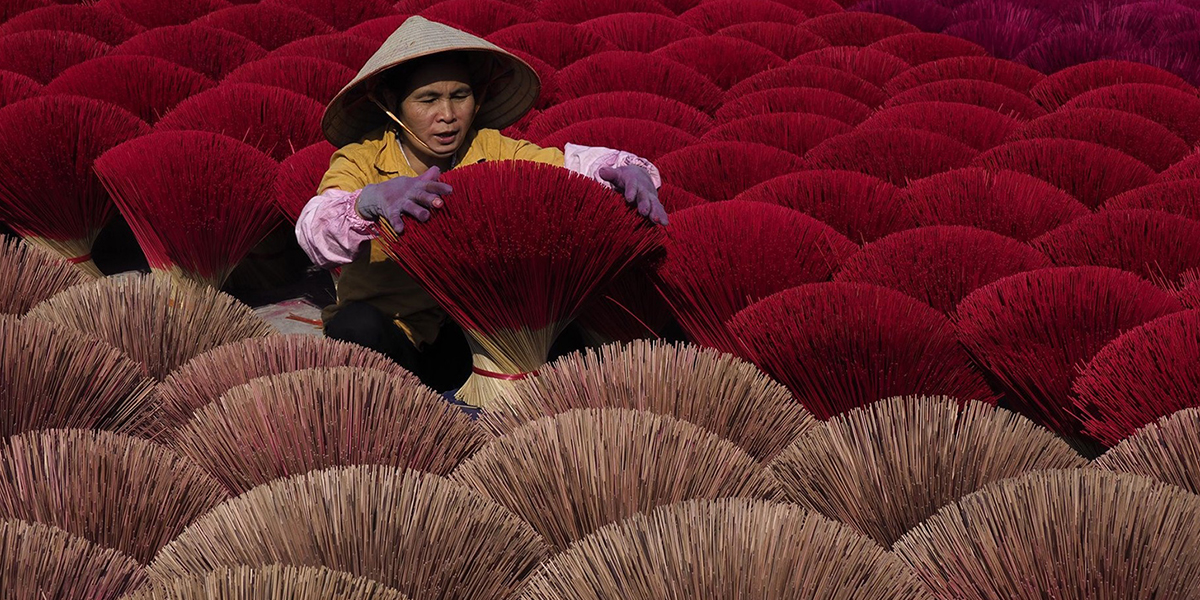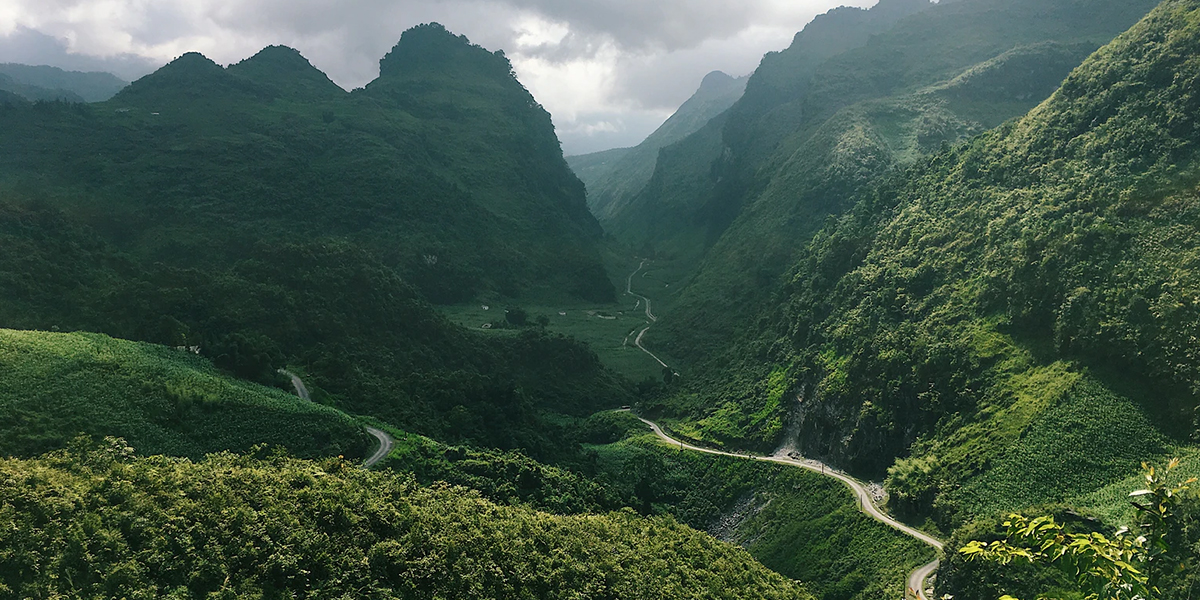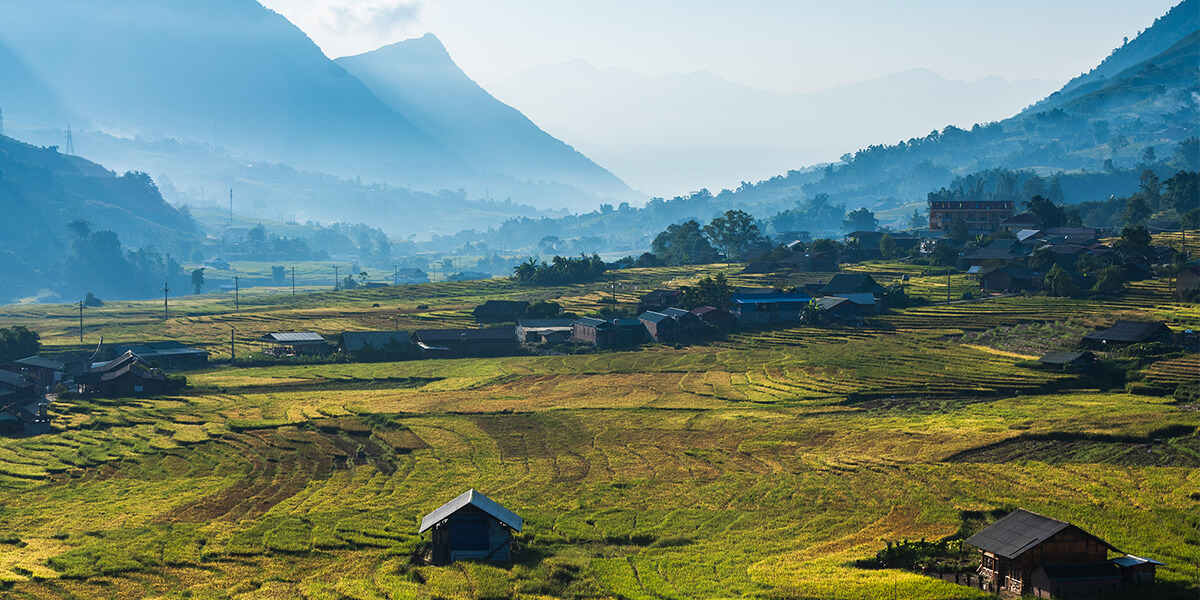Also known as Con Son island prison, the Con Dao prison was originally founded by French colonists and then reconstructed and used by the American empire to jail Vietnamese soldiers in wars in Vietnam. It is currently located on Con Lon island, the largest island in Con Dao archipelago, Ba Ria - Vung Tau province. The prison featuring several cells and 2 solitary confinements namely Tiger Cage and Cow Cage startled the whole world once the truth behind it was revealed.
I - The bloody history of Con Dao prison
The construction of the prison was launched on February 2, 1862, by Bonard, Governor of Cochinchina at the time. The reason Con Dao island was chosen to be the location for the detention is that it was totally separate from the mainland, hence prisoners had very few opportunities to escape. A “hell on earth” was born there to capture, and suppress the patriotic rebellions of Vietnamese people against the French.

Con Dao prison was shaped in the dark time of the wars in Vietnam - Source: dantri
After the success of the Revolution in August 1945, the government of Vietnam occupied this place and liberated all prisoners. Soon after the French invaded the South of Vietnam, the prison once again was once again under the control of the colonists, and resumed its “mission” to take care of unfortunate political soldiers of the Vietnam army.
After the Geneva Treaty in 1954, the French retreated from the territory of the country, thinking that savage scenes at this detention would never be replayed, in 1955, Americans and their puppets took over the Con Dao islands and immediately expanded Con Dao prison, restoring its name “Hell on earth”. Over 100 years of operation, the prison was where 20,000 political soldiers of Vietnam were tortured until death with the cemetery consisting of dozens of thousands of graves as a strong testimony.
The cruelty of the enemy failed to conquer the determination of the Socialist warriors. In the early morning of May 1, 1975, the whole detainees raised a flag and broke the cage, freeing themselves and the entire island. From 1975 until now, after Vietnam was totally independent, the Con Son island prison was dissolved and became a tourist site attracting ample visitors both internally and externally.
II - Detainment camps & solitary confinements in the Con Dao prison complex
The entrance fee to enter Con Dao island prison is 40,000 VND ($1.7) for one person, (free for children under 14, and the disabled). The complex is open from 7am to 11am and 1:30pm to 5:30pm daily. Coming in, you are allowed to visit the following structures:
1 - Phu Hai Camp

Phu Hai Camp is the oldest camp of the relic sites - Source: Trung Tín Đinh
Phu Hai Camp (other names: Bagne 1, Jail 1, or Cong Hoa Camp) was built by the French colonists about 120 years ago. It was an area of 12,015 m2 including 10 collective cells, 20 solitary stone dungeons, 1 special chamber for capturing death sentences, 1 vault for grinding rice, and 1 area for stone breaking.
In Phu Hai Camp of Con Dao prison, prison guards took prisoners to do hard work and forced them to take off all their clothes to check before entering the cell and remained naked when sleeping. When the old Saigon government took over the camp, in order to deceive public opinion, they built:a chapel, lecture hall, club, cafeteria, hair salon... and renovated the vault for grinding rice into a medical room. The campus was also planted with ornamental plants like a park. This was an attempt to both deal with public opposition and bribe and seduce political prisoners to secede, betray the community,…
2 - Phu Son Camp of Con Dao prison
Phu Son Camp (other names: Banh 2, Lao 2, Nhan Vi Camp) was formed in 1908. On a ground of 13,228m2, there were 13 grand chambers, 14 cells, and auxiliary constructions such as medic, cafeteria, eating house, clubs, hair salon, supervisor room, and garden. This camp was firmly constructed with a corridor for jailers to check the detainees. Prisoners captured here were covered with scabies, weak due to lack of sun, and malnutrition. A terrible diet resulted in dysentery, killing many people.
3 - Phu Tuong Camp

Phu Tuong Camp was built by the French in 1940 - Source: @Nhut Truong
Phu Tuong Camp (original title: “Bange 3”) is one of the darkest detentions in the Con Dao prison complex, containing the most despicable things of the colonial government and the Americans manifested by the “French-styled Tiger Cages” system. Cells were arranged surrounding the secret Tiger Cage in the middle which was expected to assault and defeat the loyalty of Vietnamese soldiers before killing them.
The Tiger Cage was divided into several rooms no more than 5m2 each. At the peak time, the number of prisoners in a single room reached up to 12, all ate and did personal hygiene in place. Poor eating forced soldiers to congest insects and worms to survive. The ceiling of the rooms were iron bars and a path in the middle for jailers to control activities inside and torment the detainees by scattering lime powder or poking a stick from above.
Moreover, the signature of the Con Dao prison tiger cages was a “sunbathing room” where the prisoners were undressed and exposed under the fierce sun in the daytime and chilling cold at night. A medic was founded to cover the eyes of international human rights organizations but its main function was to execute prisoners with poisons, and gut and steal their organs.
The maliciousness inside this camp could have been buried forever had it not been for the release of 5 students who remembered its structure and drew a map, revealed for international human right activists. Until 1970, the system came to light; the brutal crimes of the invaders were prosecuted before the international court.
4 - Phu Binh Camp at Con Dao prison

Phu Binh Camp - Source: Tú Hoàng
Like Phu Tuong Camp, Phu Binh Camp is one of the most terrible and savage places in the Con Son island prison relics. It was popularly known for the “American-styled Tiger Cage” with insane punishments, especially in mentality. Unlike the French-styled, cells in this camp didn’t have bars and a pathway on the ceiling but were covered with metal pads.
Rooms were all the same: less than 1m wide, no bed, no toilet, and the distance from the floor to ceiling is unbelievably short. Cells of no more than 5m2 in Con Dao prison were occasionally packed with 5 to 10 detainees. That number of people share a barrel to contain dung and urine which were only removed once every few weeks. The space was extremely jam-packed and stunk, especially in the daytime when the sun radiated the metal roof. Living in that conditions for a particular period, countless warriors had their mind and spirit crises, some become psycho and senile.
5 - The Cow Cage solitary confinement
The Cow Cage was built in 1930 and expanded in 1963 with a total area of 4,410m2 including 9 solitary cells, 24 drums holding pigs, 2 cages of cows, and a vault containing bull shit. This vault is 3m deep underground featuring a sewage system connected with the cages of cows.

The Cow Cage in Con Dao prison complex - Source: taucaotoc
The enemy used it to saturate prisoners and beat them until the wound bled so that the bacteria in the bull shit grew into worms and gradually digested the human from flesh to bone. With a dedicated method, this torment was the last to be uncovered but received a huge outcry from the global community.
6 - Phu Tho Camp
The Phu Tho Camp (other names: Bange 3, Jail 3, Bac Ai Camp) appeared in 1928. Under French rule, this confinement consisted of a hospital and 3 blocks (2 for collective imprisonment and 1 for separation). After 1945, it was integrated into 2 blocks, each having 4 rooms.
In the American time, Phu Tho Camp in Con Dao prison was added with room 9 and room 10 situated behind the hospital, The room 10 was divided into 15 super small cells which were also called “chicken cages”. Differing from the Tiger cage and Cow cage, the roof of the Chicken Cages was knitted with wire tires. At first, the camp was used as the capture place of new prisons sent from the mainland before they were arranged to other prisons. Afterward, it was especially for those condemned with vandalism, having plans of vandalism and escaping many times.
7 - Phu An Camp in Con Dao prison
The Phu An Camp or Camp 6 was shaped in 1968 by the Americans as a result of the expansion of the prison. Different from camps designed by the French, the Phu An allocated all the auxiliary constructions such as a clinic, eating house, and food deposits at the front, next to the entrance while cells were hidden deep inside. This was such an elaborate trick to fool international delegations and somehow exposed the unpardonable sins of the invaders.
8 - Phu Phong Camp

Phu Phong Camp - Source: Nguyễn Chí Công
Phu Phong Camp was not the first to be built in the system of camps in Con Dao prison but took away the lives of countless innocent Vietnamese soldiers. Besides, it played an important role in concealing the Tiger Cage from the public. Phu Phong was referred to as the camp with the stiffest resistance of the revolutionary activists to the French colonists and the American empire.
9 - Phu Hung Camp
Phu Hung Camp (also Camp 8) was one of the four detainment camps in Con Dao prison newly constructed by the Americans and their puppet from 1968 to 1972. The plan was that the confinement would feature 20 rooms separated into 2 opposite rows, 10 rooms, and 4 cells each. However, when the construction was being conducted for 10 rooms, the Paris Treaty was signed, causing the rest to be canceled.
III - Tourist stopovers near Con Dao prison complex
Along with the Con Son island prison, there are several other destinations offering you more understanding of the history of Vietnam and the ferocity of wars.
1 - Island Lord Palace

Island lord palace - Source: Manh-Tuan Nguyen
This building was the residence of 53 generations of island lords during the time Con Dao island prison was active (113 years). The total area of the palace is 18,600 m2 including the main house and facilities, the system of gardens and yards, gate, and fence. In contrast to the life worse than the death of prisoners in the dungeon, the extravagance of the lords embodied in every detail in this construction emphasized their evil.
Cong Quan House in the complex of Con Dao prison located close to the Island Lord Palace is probably the sole place where humanity can be found. This was an ancient guest house in European architecture where the French talented composer Camille Saint Saens resided for a full month.
After having a wander around this island, hearing the scream of prisoners, and witnessing how miserable they were, he came back and finished the timeless Brunehilda opera. Before leaving, he left the lord of the island a letter saying he believed that where beauty was respected, where evil was repelled, there was no need for law.
- Address: Ton Duc Thang street, Con Dao island
- Entrance fee: included in the entrance ticket to the Con Dao prison complex
3 - Pier 914
Are you curious about the number 914? It is not the number of kilometers, not the milestone but the number of Vietnamese political prisoners who died in the process of building up the work. Standing there, you will get goosebumps when being informed that every stone under your foot was what crushed nearly a thousand workers.
- Address: Ton Duc Thang street, Con Dao island
2 - Ma Thien Lanh Bridge Relic
Currently, two piers are the total remains of the Ma Thien Lanh bridge which was the work that the French colonists forced detainees of Con Dao prison to do. The bridge connected two majestic cliffs, which was truly a mission impossible to skin and bone prisoners. There were 400 deaths because of accidents, shortage of food, and harsh weather even when the bridge hadn’t been completed.
- Entrance fee: 20,000 VND / person ($0.9) (daytime); 40,000 VND / person ($0.7) (nighttime)
4 - Hang Duong Cemetery

Hang Duong cemeteryat night - Source: vnexpress
Accompanying every prison is always a cemetery where patriots lay down forever and Hang Duong is probably the biggest and most famous one in Con Dao island. Located near Con Dao prison, the cemetery has a huge area of 20 hectares with the number of graves growing up to the number of 20,000, the majority of which are anonymous.
You can visit this place not only in the daytime but also at nighttime. When the sun goes down, this place is brightly lit; the atmosphere is not gloomy at all; therefore, several tourists choose to drop by during this strange period.
- Address: Nguyen An Ninh street, Con Dao island
- Entrance fee: free
5 - Hang Keo Cemetery
In the past, Hang Keo Cemetery was the burial place of 10,000 bodies of prisoners who died because of the severe punishments at Con Dao prison. Today, this area is only a natural forest and skeletons of unfound soldiers.
- Address: Nguyen Chi Thanh street, Con Dao island
- Entrance fee: free
6 - Lo Voi Department Relic Site
The ruin of the Lo Voi site is seen as another method of harassment that the invaders applied to Con Dao detainees. The main function of this place was to burn coral into lime in order to have material for construction. Broken arms or legs, even skulls were a part of the landscape.
- Address: Nguyen Van Cu street, Con Dao island
7 - Con Dao prison museum

Con Dao museum - Source: Minh Trí Võ
Con Dao museum commenced at the end of 2009 following the will of former war invalids to collect and preserve mementos attached to their partners and them during the long time at the biggest prisons in Indochina at the time. The museum is not home to 695 documents related to Con Son island prison and 4,501 original materials related to the wars against the French and American in Vietnam.
- Address: Nguyen Hue street, Con Dao island
- Entrance fee: 10,000 VND ($0.4)/person
Con Dao prison historical site is a painful place, where many great citizens of Vietnam have died forever. Much as it is sad, this is also where the indomitability of Vietnam, the spirit of resilience in the face of all cruel and horrible torture was proved. Whenever stepping foot here, the only feeling that fills the heart of any Vietnamese people is the pride and gratitude to the previous generations who sacrificed for the autonomy of the whole nation.







.jpg) — Ha Bich
— Ha Bich











